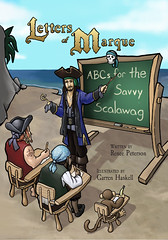


If you're me, you make date wine! My boss received 4 boxes of dates for Christmas, each box weighing about 15 pounds. After everyone in the office stuffed themselves, took some home, made fuitcakes, and whatever, there was still one box left. I snagged it.
Some of you may know I homebrew. I usually make meads, but I have been known to make the occassional fruit wine, and this was right up my alley. Date wine has quite the lengthy history, and you know I'm all about anything I can brew from the past! One schmuck says date wine was brewed after 560 AD, but I have a recipe for it in "A Sip Through Time" dating from 77 AD. Furthermore, evidence from sites in Jericho and Ein Feshkha indicate dates were brewed in Mesopotamia as early as the first century BC, and may have been the primary beverage of choice, replacing barley wines. With this sort of history, how could I not try it?
My first problem was selecting a recipe. I did some research, and discovered dates have a low acidity, and not much flavor in and of themselves. I imagine drinking it was more to get drunk than to enjoy the taste- and evidence from the Babylonian Talmud suggests the hangovers were, quite literally, epic in scale. Brewing it must also have been sort of hit-and-miss, since brewers relied on the yeasts left on the skins to ferment it.
The recipes I found were of two basic structures: dates only, and dates mixed with berries, raisins, and/or citrus. I decided history was all fine and dandy, but I also like a wine to taste good, so I opted to try the second variety. One recipe had nutmeg, which I love in my meads, another had raisins, another had apricots, one had raisins and citrus, some called for fresh dates, and only one had a dried date alternative. Some called for leaving the seeds in to impart flavor, some called to pit, or stone, the fruit. The ratio of dates ranged from 1.5 to 4 pounds of fresh fruit per gallon, and the sugars ranged from 1.5 to 1.75 pounds per gallon. In some recipes without citrus or raisins, the modern brewmakers suggested tannins and acid blend. I'm also told this is not a good wine to drink "young"; it needs to age a good 2-3 years to taste its best. Finally, I decided to use "Date and Raisin Wine" recipe from here: Date and Raisin Wine. I'm modifying it slightly.
First, I'm making 5 gallons, so I'm supposed to multiply everything by 5... but I don't want quite THAT much citrus. I decided to leave the seeds in for practical, rather than culinary reasons- have you ever tried to pit and chop 15 pounds of dried dates? Based on a different recipe's equation of 1 pound dried = 2 pounds fresh dates, 4 pounds fresh dates per gallon would be 20 pounds for 5 gallons, or 10 pounds of dried fruit. I added 11, just because I could, and because I'm using white rather than brown sugar. I have no idea how the absence of molasses flavoring will affect the taste of the finished wine, but I'm willing to take my chances. I can always add more sugars later- I like a sweet wine and will most likely be adding more later anyway. Since I'm already using raisins and the seeds of the dates, I don't want to add more tannins unless I know I have to; I prefer to use a flavor-neutral yeast nutrient and energizer. It's easier to add flavors than remove them. If I don't have enough acidity from the fruit alone, I'll add some acid blend after testing the acidity, once the primary fermenting has done its job.
I ended up with this in my primary bucket (My modified date wine recipe):
11 pounds dried dates (sliced once lengthwise to expose fruit and pit)
30 ounces golden California raisins (2 boxes) (chopped in food processor)
6.5 pounds white sugar
4 oranges, zest and juice
3 lemons, zest and juice
3 whole nutmegs
5 gallons filtered drinking water
3 tsp Goferm (nutrient)
1 tsp FermaidK (energizer)
3 tsp pectic enzyme
1 packet Lalvin K1-v1116 yeast
The process:
Three hours of slicing dates, chopping raisins, zesting fruit. Added whole mess (plus nutmegs) to fruit bag in the primary fermenting bucket. Boiled about 1.5 gallons water, added to primary. Added 2 tsp sodium metabilsulfite solution (aq) to sanitize the fruit. (As a rule, I use the sodium solution instead of Camden tablets, which are Potassium metabisulfites. Why? Because my homebrew store told me to.)
I let the whole mess sit about 12 hours. Warmed up some more water, added the sugar and dissolved it, then added the juice of the fruits I had zested the day before. Added all of that to the primary, stirred. So far, the concoction smells like citrus and tastes like sugar water. Added the pectic enzyme and go ferm, and let sit some more. Pitched the yeast no less than 24 hours after adding the sterilization solution- otherwise, nothing would happen!
Should bubble nicely for the next week. Go dates!














7 comments:
Let me know how it turns out!
It sounds a little bit like icewine, which tastes like fermented raisins. Actually, it sounds much more complex than that, which should make it quite valuable!
When will it be ready?
I dunno about valuable- I'm just hoping for tasty! SHould be ready by, oh, 2010.
Any updates on your wine?
Mmmm?
Mmmm?
Mmmm?
Did you try it yet? I am not able to wait too long and although it matures with time, I am curious how it tastes after fermentation? Thank you, M
Post a Comment